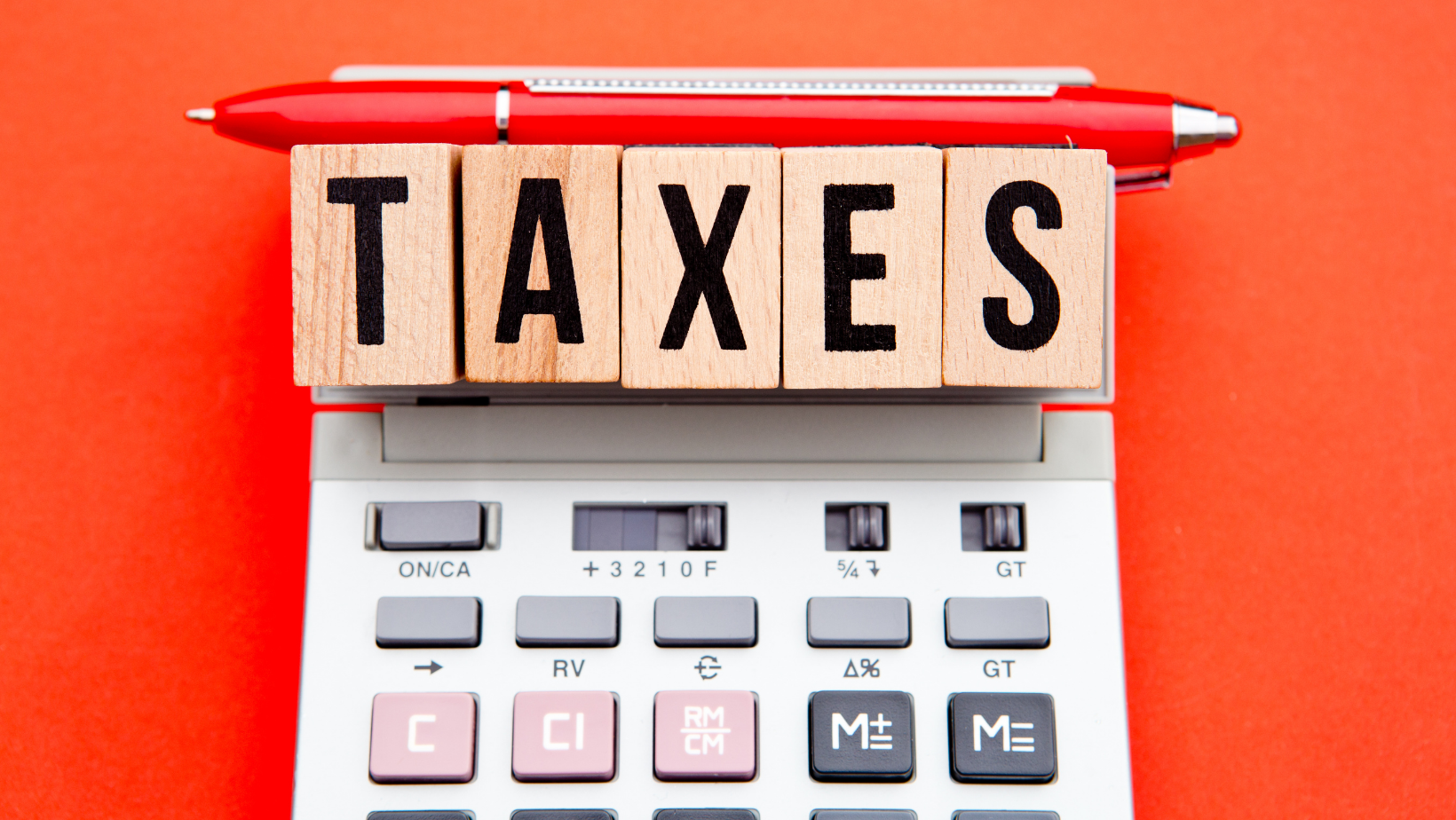
Tax Planning 101: How Do Tax Brackets Work?
Tax Planning 101: How Do Tax Brackets Work?
It’s that time of year again: tax season. We often hear “tax brackets” referenced and tossed around in conversation, especially throughout the days leading up to Tax Day on April 15. What do these brackets mean for Americans and how do they come into play when you are filing your taxes? As Benjamin Franklin once famously said: “In this world, nothing can be certain, except death and taxes,” validating the importance of understanding the one system we can all count on to be a constant each and every year.
What Is a Tax Bracket?
A tax bracket represents a particular range of incomes subject to a specified income tax rate. The American tax brackets reflect a progressive tax system that involves the degree of taxation progressively increasing as an individual’s income grows. In other words, high-income earners fall into tax brackets with higher income tax rates, while low-income earners fall within tax brackets that have comparatively low-income tax rates. Our income tax system is based on the taxpayer’s ability to pay, meaning the income tax rates take a larger percentage from high-income earners than they do from lower income earners. The rationale behind such a system is that people with lower incomes typically require more of their income to cover the basic needs of daily life. How progressive a tax structure is depends on how quickly the tax rates rise in relation to the increases in the corresponding income ranges. The tax brackets and the progressive American tax system generate a stark contrast to a flat tax structure in which all people are taxed at the same rate without any consideration given to varying income levels.
In the U.S., the Internal Revenue Service (IRS) implements our income tax system. Our tax system went through significant changes and became less progressive as a result of the Tax Cuts and Jobs Act (TCJA) of 2017, which represents the most significant tax code overhaul in over thirty years, since the overhauls enacted via the Reganomics era in the 1980s. There are currently seven federal tax brackets that range from tax rates of 10% to 37%, with the income ranges for each level varying for single filers, married filers (both joint and separate filers), and head of household filers, denoting unmarried individuals who cover more than half of the costs for supporting and housing qualifying individuals like a child or parent. The income ranges for these brackets are adjusted annually according to the Consumer Price Index (CPI), a measure that reflects the average change in prices over time that consumers pay for goods and services, more commonly known as inflation. Given the sub-categories within each bracket level, there are, overall, 28 “effective” tax brackets that every qualifying American will fall somewhere within when filing their taxes, as seen through the chart below that displays the 2019 Federal Income Tax Brackets for taxes due by April 15.

What Tax Bracket Do I Use?
When it comes to determining which tax bracket you fall under, you first need to calculate your taxable income for the year. Your taxable income is commonly referred to as your adjusted gross income because it comprises your total earned income, including your salary and bonuses, in addition to your investments and unearned income, such as dividends and interest earned on investments, minus any tax deductions and exemptions that you qualify for in the tax year you are calculating for. Once you know your taxable income, you can then move on to determining your tax bracket.
People often refer to tax brackets and tax rates as the same thing; however, it is important to differentiate the two. A tax rate refers to the percentage at which the specified amount of your taxable income, according to the income ranges listed within each tax bracket, is taxed. These seven tax rates assigned to the tax brackets range between 10% to 37%, as mentioned earlier, and are known as the marginal tax rates. The word marginal is used because each of these rates applies to a specific level of income rather than applying to all of your taxable income. The marginal tax rate is the highest tax rate that applies to a portion of your income; in other words, as you move your way through the tax table when calculating your taxes, the marginal tax rate corresponding to your total taxable income is the highest rate you will be subjected to. When people specify what their tax bracket is, the number they use is one of these seven marginal tax rates, but this rate does not represent how much you will pay in taxes unless your taxable income does not exceed the range specified in the lowest bracket.
Understanding the Effective Tax Rate
As explained, the marginal rates apply different rates to different levels of your total taxable income, but this marginal rate does not represent the overall rate applied to your taxable income. Because we have a progressive system, all taxpayers, aside from those who fall evenly within the minimum tax bracket, have income that is taxed progressively – as your income rises, you are taxed at a higher rate. When calculating your taxes, your income is divided up according to the specific ranges listed within each marginal rate bracket, and each range of your income is subject to the corresponding marginal tax rate. The sum of the taxes you owe on these portions of your income represents the total amount of taxes you are liable for, and the percentage of your total taxable income that this sum is represents the actual percentage you are being taxed in a given tax year and is known as your effective tax rate.
That being said, a taxpayer pays the lowest rate of tax on her income that falls within the first level bracket, a higher rate for the income that falls within the next level, and so on until the taxpayer reaches her total taxable income for that tax year, as seen through the tax table mentioned earlier. Let’s take a look at an example. Let’s say you are a single filer who earned $80,000 in taxable income in 2019. You will use the federal tax tables to determine which tax bracket you fall into – in this case, the 22% tax bracket – and this is known as your marginal tax rate. It does NOT mean you need to pay 22% on every taxable dollar; in other words, just because you fall within the 22% tax rate does not mean all of your income will be taxed at 22%. This marginal tax rate of 22% means you will pay 22% on any taxable income above $39,475, the beginning range of the tax bracket your taxable $80,000 places you within.
Now, we can begin calculating your effective tax rate to determine your tax liability for the 2019 tax year, meaning the amount of taxes you owe to the IRS for 2019. To calculate this, you will work your way up the tax brackets and apply each level’s marginal rate to your amount of taxable income that falls within each range. The effective tax rate you owe on your $80,000 taxable income is broken down as follows:
1. 10% x $9,700 = $970
2. 12% x $29,775 ($39,475 - $9,700) = $3,573
3. 22% x $40,525 ($80,000 - $39,475) = $8,915.50
Your tax liability is the sum of the amounts you owe per bracket; therefore, you owe $13,458.50 in taxes for the 2019 tax year, which comes to an effective tax rate of 16.82% of your $80,000 of taxable income.
Final Points
Determining your taxable income and effective tax rate can be a daunting task, making it prudent for you to consult your tax advisor as you navigate the tax season annually. Remember that the U.S. implements a tax withholding system, which means that taxes are withheld from each paycheck according to how you file via IRS form W-4, the form shared with your employer so your company knows how much tax to withhold from each paycheck. Under the current withholding system, come Tax Day annually, you determine your tax liability for the year and either pay the remainder you owe or get a refund if too much tax was withheld. Confirm your advisor helps you implement any tax deductions and credits you qualify for to ensure you do not end up paying Uncle Sam more than you are liable for.
Securities and Advisory Services offered through Commonwealth Financial Network, Member FINRA/SIPC, a Registered Investment Adviser.
AFS Financial Group does not provide tax advice. You should consult a tax professional regarding your individual situation.
Questions and/or interested in how this applies to your financial life?
Email us here: info@afsfinancialgroup.com.
Recent Posts
Blog Archives
- December 2019 (6)
- March 2023 (6)
- November 2019 (5)
- January 2020 (5)
- March 2020 (5)
- September 2020 (5)
- January 2022 (5)
- January 2023 (5)
- August 2020 (4)
- February 2021 (4)
- March 2021 (4)
- April 2021 (4)
- November 2021 (4)
- March 2022 (4)
- April 2022 (4)
- September 2018 (3)
- February 2020 (3)
- May 2020 (3)
- June 2020 (3)
- July 2020 (3)
- October 2020 (3)
- June 2021 (3)
- May 2022 (3)
- June 2022 (3)
- August 2022 (3)
- May 2023 (3)
- June 2023 (3)
- August 2023 (3)
- November 2023 (3)
- April 2024 (3)
- December 2018 (2)
- April 2020 (2)
- November 2020 (2)
- December 2020 (2)
- May 2021 (2)
- August 2021 (2)
- September 2021 (2)
- October 2021 (2)
- February 2022 (2)
- July 2022 (2)
- October 2022 (2)
- November 2022 (2)
- February 2024 (2)
- February 2019 (1)
- March 2019 (1)
- May 2019 (1)
- July 2019 (1)
- August 2019 (1)
- September 2019 (1)
- October 2019 (1)
- January 2021 (1)
- July 2021 (1)
- December 2021 (1)
- September 2022 (1)
- December 2022 (1)
- February 2023 (1)
- April 2023 (1)
- September 2023 (1)
- October 2023 (1)
- December 2023 (1)
- January 2024 (1)
- March 2024 (1)
- May 2024 (1)
- September 2024 (1)
